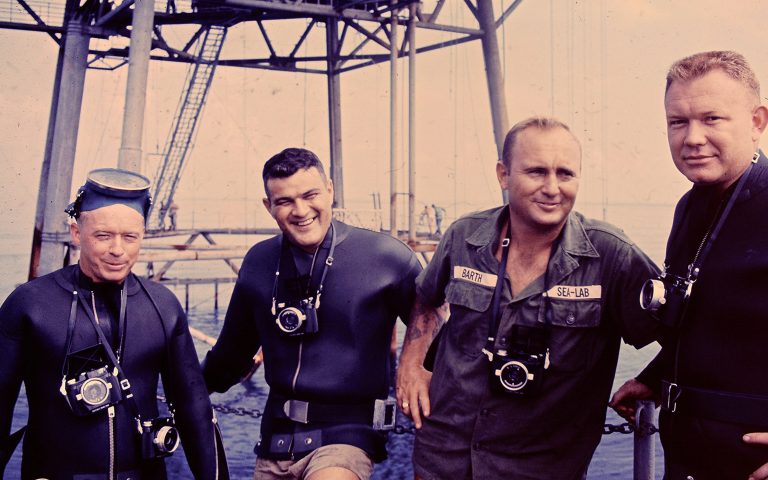In the 1960s, NASA’s first astronauts tested the limits of human endurance far above the planet. Meanwhile, teams of intrepid divers explored similar boundaries in an equally inhospitable environment here on Earth: the dark, numbingly cold and high-pressure depths of the ocean.
Dubbed “Sealab,” the grueling program was launched by the U.S. Navy during the Cold War. Participants called “aquanauts” trained to survive underwater in a pressurized environment for days at a time, at depths that created enormous physical challenges. Over three stages, the Sealab environments descended to greater and greater depths. But with the death of a diver in 1969, officials decided that the risks were too great, and they terminated the program.
The long-forgotten story of the aquanauts surfaces in a new documentary called “Sealab,” airing Feb. 12 on PBS at 9 p.m. ET (check local times).
From the 1950s into the 1960s, the U.S. and the Soviet Union were engaged in a heated race into space. But they were also eyeing each other’s progress in the development of deep-sea technology for submarine warfare. To that end, the U.S. Navy established a program to test just how deep into the ocean humans could go, Stephen Ives, director and producer of “Sealab,” told Live Science.
“Ironically, the ocean is far more accessible than the stratosphere, and yet, it’s remained more of a mystery than space,” Ives said.
The deep ocean exerts crushing pressure on the human body, compressing oxygen in the lungs and tissues. The deeper a diver descends, the more time is required for the body to return safely to normal surface pressure. Rising from the depths too quickly releases nitrogen bubbles in body tissues, causing the bends — excruciatingly painful cramps and paralysis, which can be lethal.
Read more HERE
Ask me anything
Explore related questions





